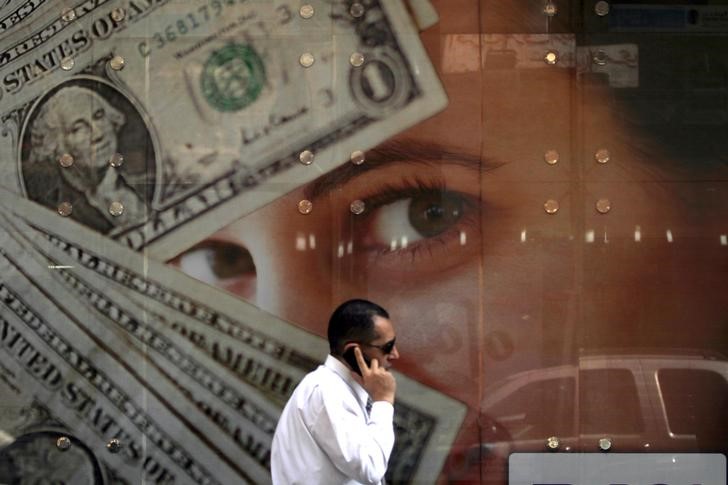* Dollar falls to one-month lows vs euro and yen
* Commodity currencies rebound after decades-long lows on
Tuesday
(Adds U.S. market, changes byline, dateline, previous LONDON)
By Dion Rabouin
NEW YORK, Dec 9 (Reuters) - The dollar fell on Wednesday as
commodity currencies reversed steep losses from Tuesday as oil
recovered, while the euro rose as investors shifted back into
the single currency.
Oil edged up modestly on Wednesday, helping the Canadian
dollar CAD= and Norwegian crown NOK= regain some footing
after touching 11- and 13-year lows respectively against the
dollar on Tuesday.
The crown added 1 percent against the dollar to 8.6785
crowns per dollar, and the loonie gained 0.35 percent to move to
C$1.3536. Those currencies have been under pressure as oil
prices have fallen dramatically; both countries' economies rely
on the oil and gas industries.
The euro EUR= and yen JPY= both hit one-month highs
versus the dollar as traders reversed course on the bullish
trend that pushed the greenback to multi-month highs against
both currencies before the recent European Central Bank meeting
interrupted that trend.
The ECB announced on Thursday it would cut its already
negative deposit rate further, but said it would not add to its
quantitative easing program, disappointing investors. The move
sent the euro up 3.1 percent on the day, its biggest one-day
percentage climb since March 2009.
Since then, the dollar has recovered, in anticipation that
the recent trend of dollar strength would reassert itself. In
the weeks leading up to the ECB meeting, speculators had
increased long positions on the U.S. dollar to their highest in
eight months, according to Reuters calculations and data from
the Commodity Futures Trading Commission.
While the ECB announcement reversed the dollar rally,
analysts still expect the greenback to rise in the coming weeks.
Charles St-Arnaud, senior strategist and economist at Nomura
Securities in London, said Wednesday's moves in the euro and yen
were likely driven by investors acting cautiously ahead of the
Federal Reserve's upcoming meeting on Dec. 15-16, when the Fed
is widely expected to start raising interest rates.
"There's no real fundamental (change)," he said. "So most
investors would probably continue thinking that the euro should
be trending lower, especially with the (expected) Fed hike next
week."
The euro rose as high as $1.0989, its highest since a
surprisingly robust U.S. jobs report on Nov. 6 pushed the
continental currency and major rivals down against the dollar.
The euro was last up 0.55 percent to $1.0953.
The dollar fell below 122 yen per dollar for the first time
since Nov. 6. It was last down 0.6 percent to 122.15 yen.
